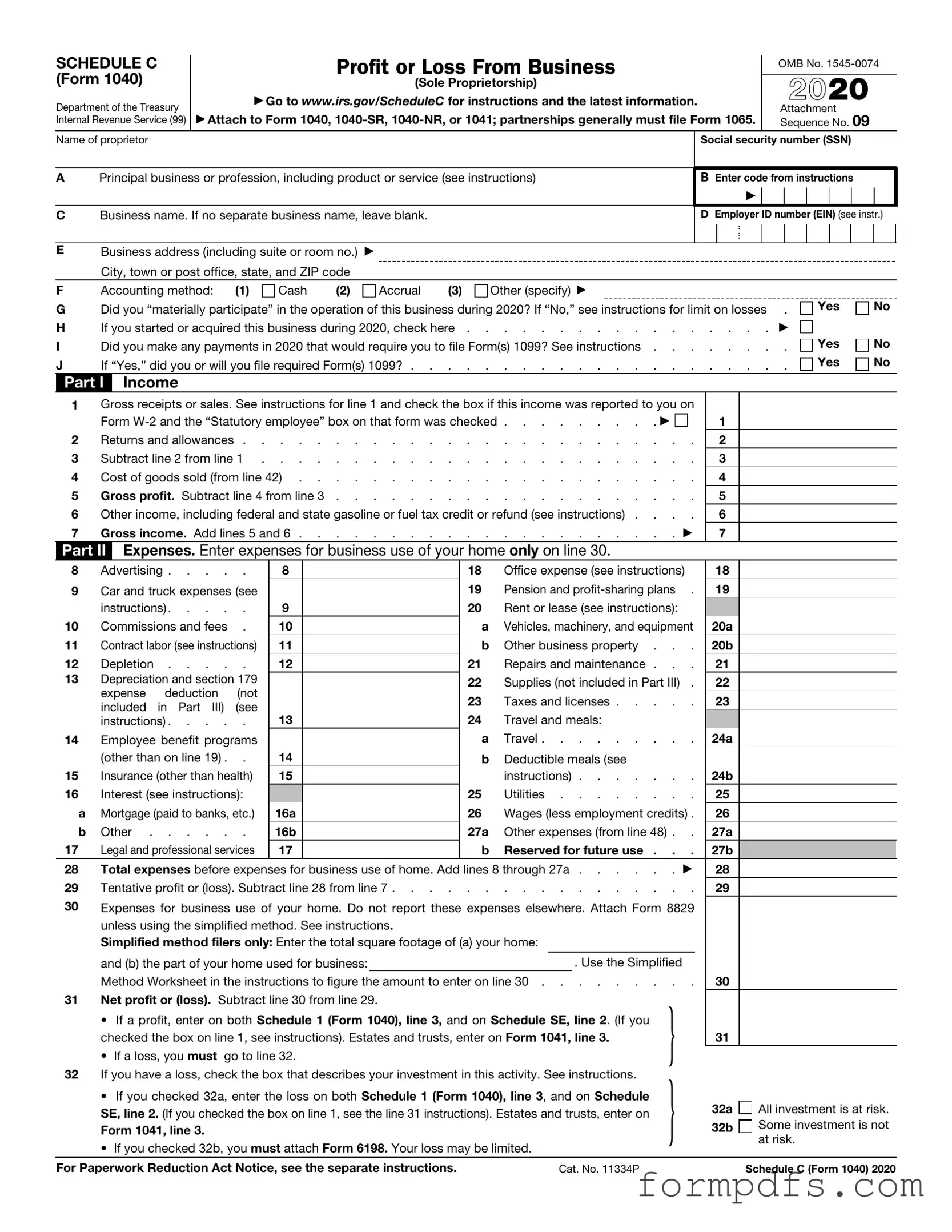What is IRS Schedule C (Form 1040)?
IRS Schedule C is a tax form used by self-employed individuals to report income and expenses related to their business. This form is filed along with Form 1040, the individual income tax return. If you operate a sole proprietorship, you will typically use Schedule C to detail your business's financial performance. The information provided helps determine your net profit or loss, which is then included in your overall taxable income.
Who needs to file Schedule C?
If you are self-employed or run a business as a sole proprietor, you will need to file Schedule C. This includes freelancers, independent contractors, and anyone else earning income from a business that is not incorporated. Additionally, if you are involved in a partnership or LLC that is treated as a disregarded entity for tax purposes, you may also need to complete this form. It's essential to accurately report all income earned and expenses incurred to ensure compliance with tax laws.
What expenses can be deducted on Schedule C?
Schedule C allows you to deduct various business expenses that are ordinary and necessary for your trade. Common deductible expenses include costs for supplies, advertising, vehicle expenses, and home office deductions if applicable. Additionally, you can deduct expenses related to utilities, rent, and professional services. Keeping detailed records of all expenses is crucial to substantiate your claims in case of an audit.
How do I report my income on Schedule C?
To report your income on Schedule C, you will start by listing your total gross receipts or sales from your business. This figure should reflect all income earned during the tax year. You will then subtract any returns or allowances to arrive at your net income. It's important to maintain accurate records of all income sources, including invoices and bank statements, to ensure your reported figures are correct and complete.
